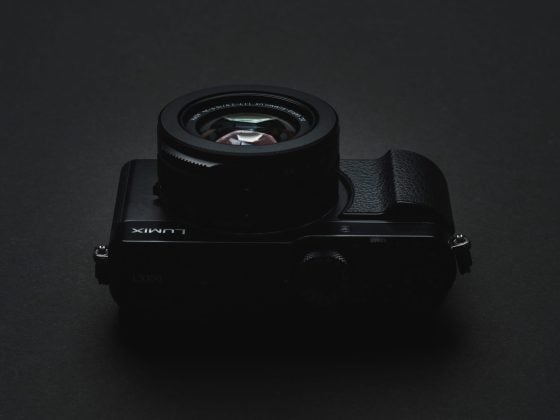The Sony A6400 is a small, lightweight APS-C camera designed for photographers and videographers looking to maximize versatility and image quality without compromising performance.
Built like a tank, the A6400 is one of the best autofocusing cameras out there. It has some really nice specs overall, including 11fps of continuous RAW shooting, 4k 100mbps video, and a Tilting screen for selfies or vlogging.
Because Sony omitted IBIS from the A6400, the camera is lighter than the A6500 and has a battery that lasts about a full day.
Sony A6400 Specs
Sensor: 24.2MP APS-C Exmor CMOS Sensor
Processor: BIONZ X Image Processor
EVF: XGA Tru-Finder 2.36m-Dot OLED EVF
Screen: 3.0″ 921.6k-Dot Tilting
Phase Detect: 425 Phase- & Contrast-Detect AF Points
Continuous Shooting: Up to 11 fps
Best Accessories For Sony A6400
Best Memory Cards For Sony A6400 – coming soon

First Impressions – My Experience
Those who follow my blog know I’m pretty heavily invested in the Fujifilm system, owning most of their prime lenses and cameras. As a photographer who shoots with Fujifilm cameras about 80% of the time, this is sort of my opinion of the Sony A6400.
In this A6400 review, I’m not going to go too much into specs, ISO performance, or dynamic range because, honestly, none of that matters anymore. I will talk a bit about features, or at least what stands out to me. Cameras, to me, are like cars, and handling is one of the most important features. They must feel good and snappy because you don’t always need 600 horsepower to drive to the grocery store. People in 2019 are still way too obsessed with specs, and I try not to be like that on this blog.
Anyway, when it comes to Sony cameras, I’m definitely not familiar with them. I started shooting Sony a few years before I started shooting with Fujifilm, actually, my first professional photo shoot was with a Sony Alpha camera back in 2006 doing some box art for a kid’s game. The studio I was at was all Sony gear with the 1080i Sony Z1U and Sony still cameras. So I think it’s funny when people act like Sony is some new camera company or isn’t a real camera company. Remember, they purchased Minolta, which has made cameras for decades, and now Sony has made cameras for decades.

As someone who now shoots little on every system (except Pentax), I’ve really come to the conclusion that there is no best camera brand. Each brand seems to have a different goal and design philosophy.
Sony is the king of mind-blowing software and hardware sensor tech. Canon is the master at perfecting the user experience with incredible ergonomics, interfaces, nice out-of-the-box color, and high-bitrate video. Nikon focuses on maximizing pro features with hardware and design (minus dual card slots which doesn’t really matter for most people since XQD is a superior format), and Fujifilm with the X-T3 has probably the best complete package now offering by far the most features, with some room for improvements of course.
Panasonic . . . well, they didn’t put phase detect autofocus in their S1 and S1R cameras. While this will likely improve sensor output, meaning they will likely make the best mirrorless astro / landscape cameras, this may gimp the user experience since contrast AF is very jittery. We’ll see; it might not matter.

Where the A6400 Lives In All The Noise
I owned a Sony A6300 for about a year and was always impressed by it. I always loved shooting with it when I could.
One of my biggest photography regrets in the last few years was selling that camera. I loved the thing, it was so much fun to hold and to shoot and I always miss it. Yes, I could have just bought another one, but I wouldn’t have been able to use it.
Here is why –
For the last few years, I’ve been using Fujifilm cameras for my 3rd party manual lens reviews to keep image quality and look consistent. Fujifilm also has better tools for manual focus assistance, such as better focus peaking, split focus, prism, etc., so it made sense when doing lens reviews.
So it’s not that I sold my A6300 because I didn’t like it; it was because I really had no need for it even though I really wanted it. The A6400 is really one of the nicest walk-around cameras out there. It’s small, light, easy to use, responsive, and snappy. In other words, it doesn’t have laggy controls or screen refresh rates, and autofocus is on point. It is a little light on features, especially if you compare it to the Fujifilm X-T3 or X-T30 (color chrome, high bit rate video, in camera raw converter, etc.), but at the end of the day, if all you care about is shooting photos in RAW, none of those little features help much anyway.
So I have to say, the Sony A6400 is my favorite camera that I don’t own, and one of my favorite cameras period. Shooting with it is just fun, plain and simple and it’s great at all the things that matter.



A6400, Sony’s Best Camera?
The Sony A6400 has some nice improvements over my old A6300 that are much welcomed. They’ve improved some specs and the focus a bit. They’ve included the updated menu system that we saw in the A6500, and they’ve added a flip-up screen, which is a nice solution for vloggers who are okay with side-mounting a mic. The camera also doesn’t even remotely get hot.
Overall, I think this is Sony’s best camera, or the A6500 if you don’t mind the heavier body with IBIS, which isn’t as useful as you would think, especially if you’re shooting people that are moving since you’ll need 1/80 shutter or faster to eliminate motion blur.
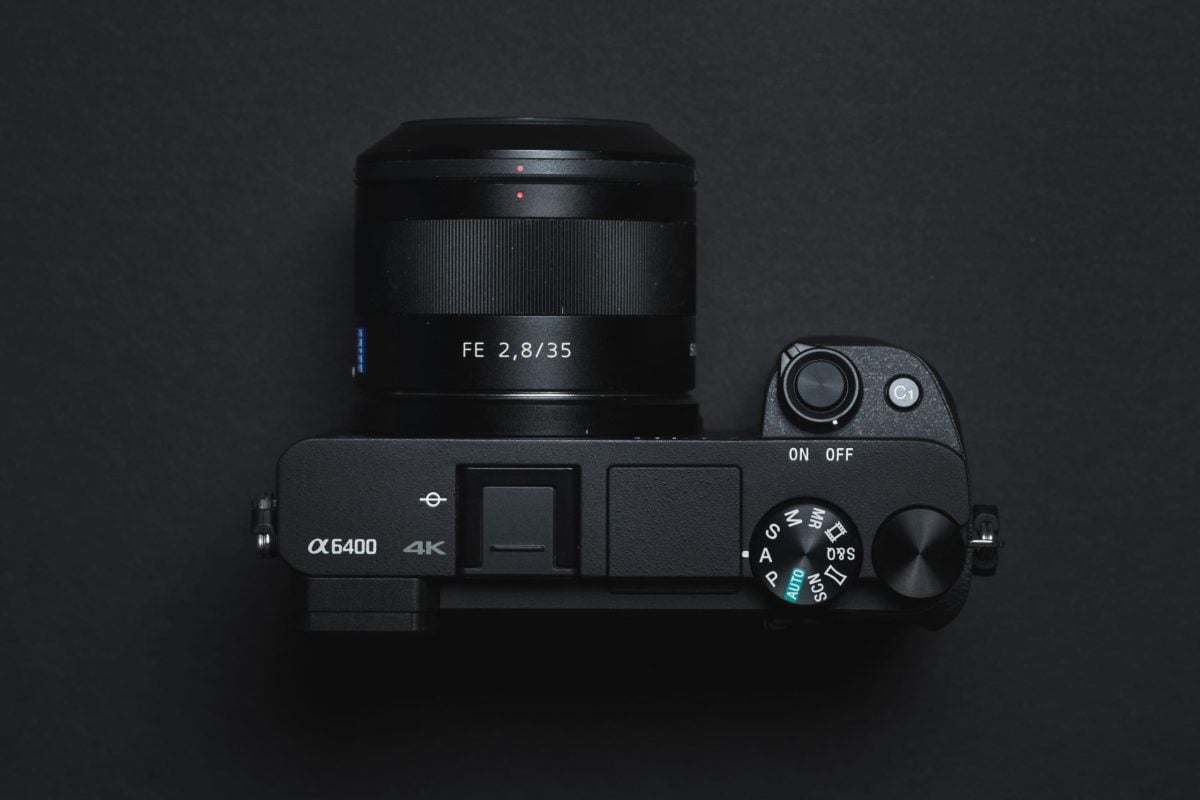
You might be saying, “No the Sony A9 is the best camera.” Based on specs yes, but overall, no. The Sony A9 is too expensive for normal people, the full frame e-mount lenses are too expensive and big and the body and design of the A9 (A7rIII, A7III) still needs some serious work and Sony is officially pretty far behind with video specs for cameras that expensive. No H.265, no 400mbps 4k, no internal 10-bit, to name a few.
While the A6400 is a little behind on some video specs, it’s priced right and has amazing autofocus and great ergonomics, which is what matters the most.
Sony has been making these little mirrorless APS-C cameras long before they started making the full-frame versions, and it really shows. This is, I think, the third or fourth design update since even the NEX 5, and it’s now been refined to perfection. All the buttons’ placement is great; they all feel good, nothing hurts your hands or fingers, and nothing is really cumbersome to use. All your controls are right there, and the camera is super easy to grip and use.
Plus, the A6400 is very light compared to the bigger full-frame E-Mount cameras. They put too much battery in those things, jammed in IBIS, and are too heavy to carry around when shooting street or family outings for hours.
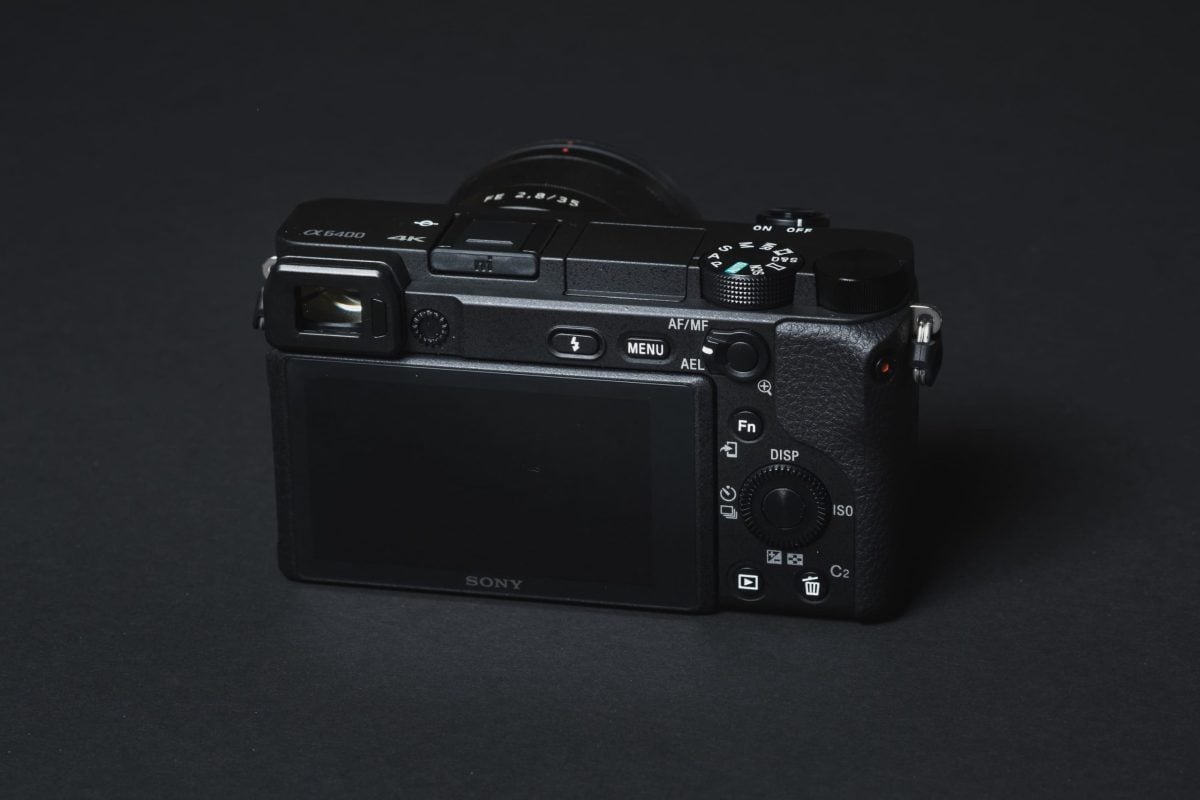
The Nikon Z6 and Pansonic S1 also have this weight problem, but my A7rIII is still slightly heavier than my Z6, which I feel is a problem for Sony, which prides itself on keeping its cameras small. What’s the point of having a small camera if it’s heavier than the bigger Z 6 and EOS R?
I personally want cameras that are not too heavy, and Canon is the only one that has delivered when looking at full-frame cameras. Otherwise, APS-C cameras like the A6400 are the way to go. This is why I like this A6400 so much; its size and weight make it perfect for daily non-professional shoots.

Sony A6400 Autofocus
Sony autofocus is god-like, as you know. The camera’s focusing AI is just incredible, although technically, I don’t think the A6400 has an AI chip or anything like that.
The autofocus doesn’t just have good eye detection or face detection, somehow the camera reads the scene and kind of knows what to go for. If you have someone standing in front of you, it doesn’t usually sit there trying to focus on a fence thirty feet behind them like my Z 6; it usually knows to focus on what’s in the middle ground or on what’s moving.
Eye and face detection also work very smartly and intelligently. If a person faces you, it goes profile, and it keeps tracking one eye until it can see both eyes again.
In contrast, when my Fujifilm X-T3 loses face or eye detection, that focus point tends to go on its own little adventure until acquiring the eyes again.
This intelligent AF tracking is what most people don’t talk about when talking about autofocus performance because it’s hard to quantify. Reviewers always talk about focus speed, thinking it’s all about the camera. Raw focus speed often comes from the tech in the lens, focus accuracy often comes from the camera, and cameras need to be smart about knowing what you’re going for. This will be the future of cameras, reading compositions, and intelligently focusing. Sony is ahead of the pack here, and it’s obvious if you use all the systems.

Sony Really Has The Best AF
Sony is the only camera company with AF that works well across the board. All the other companies now do good eye and face detection, but Sony has taken it a step further and has it working really well with a general smart tracking system.
Fujifilm, Canon, and Panasonic all have great eye and face detection, but none of them intelligently switch from face/head tracking to just smart tracking and then back to eye tracking like Sony does.
While the A6400 focusing is amazing, it’s still not perfect . . .
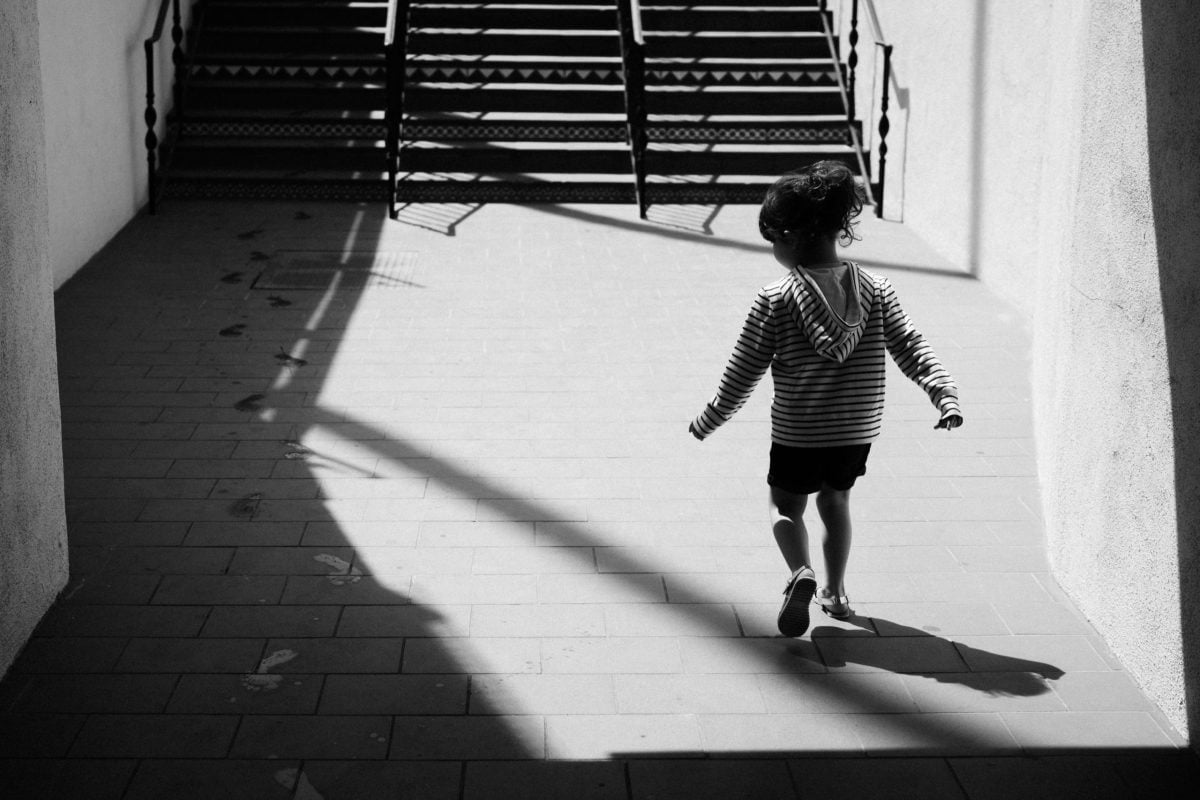
One thing I noticed was that while the camera can draw good boxes and focus points and find the subject perfectly, it doesn’t always mean the focus can keep up.
The lens I was using for this review was the Sony Zeiss 35mm f2.8 lens, which focuses incredibly fast, but just like with my Fujifilm X-T3, it still struggled to nail complicated focus situations with a lot of lateral movement even though the camera was drawing the boxes perfectly around the face or eyes. So it would seem like we are seeing the limitation of the mechanical focusing ability of lenses now, and the software is now outperforming the hardware.

Manual Focus
Manual focus in the Sony A6400 is fine but not the best. The issue is focus peaking.
I still think Fujifilm is the way to go for manual focus shooters using third-party lenses without CPU contact. They give you more tools, and those tools, like peaking, are just better. Focus peaking on the Sony cameras is a bit sloppy and slightly inaccurate. It’s still usable if you’re patient, but Sony’s focus peaking is the worst of all the brands.
The good news is that Sony has finally started taking notice, and we are seeing improvements to focus peaking technology with the latest firmware updates seen in the Sony A9. Hopefully, this will trickle down to their other cameras, like the A6400. In the meantime, if you want to focus on manual lenses, it’s still very workable; it’s just not as accurate as some other cameras, and you’ll need to spend a bit more time making sure you get it right if you decide to use peaking. A lot of Sony shooters just turn it off.
Those Sony Colors
I want to talk about Sony colors for a bit since they come up in every conversation about Sony cameras. I keep seeing a lot of negative propaganda about Sony colors, and a lot of people are very misinformed or confused. Even those championing Sony colors, saying they are the best, always end up saying things that are just wrong, confusing people even more.
I think a lot of this meme comes from all the Canon shooters that switched to Sony.
Canon RAW files have a unique look; it’s almost like they’ve baked in a film preset or something. The problem is, when you get used to these Canon RAW files, switching to Sony is like jumping into a freezing lake, not because the Sony colors are bad, but because they are very different. Sony RAW files are a lot more neutral and attempt to show a lot more color information than Canon cameras, which lean into consumer-friendly color harmony and often pull colors to look slightly warmer.

Raw vs. JPG vs. MOV
When discussing color science, there is also a huge difference between RAW color and JPG color or MOV color. Surprisingly, even the biggest camera reviewers get this very confused.
MOV files typically use the same color profiles we get from JPG, unless you’re using some sort of Log. RAW, or ARW files have a look determined by the camera’s signal processor that happens in the analog to digital conversion. This RAW look can also be influenced a little by software RAW processors, like Lightroom, Luminar, or Capture One.
In my experience, I think some of the Sony JPG profiles look good and are great for video. I even like some of their looks more than Canon’s. For example, the Sony Standard look is actually really nice, in my opinion, but with Canon, I don’t love their Standard look; instead, I like their Portrait look. With Fujifilm, I like the Provia, Classic Chrome, and Pro Neg, but I don’t love Astia. So, that’s something to remember when dealing with different camera brands or talking about color science. Cameras all have different JPG profiles you can choose, from if you shoot RAW, you can even add them back in later in Lightroom. But, each camera will have a unique-looking RAW, and RAW will look different than JPG or Video.
I personally don’t shoot JPG often, so the color profiles only really affect video colors. Honestly, I can’t say I like one more than others because all the brands have different profiles you can choose from. Except the Canon R and Fujifilm X-T3 have over 4x the bitrate, so they tend to look better just by default.
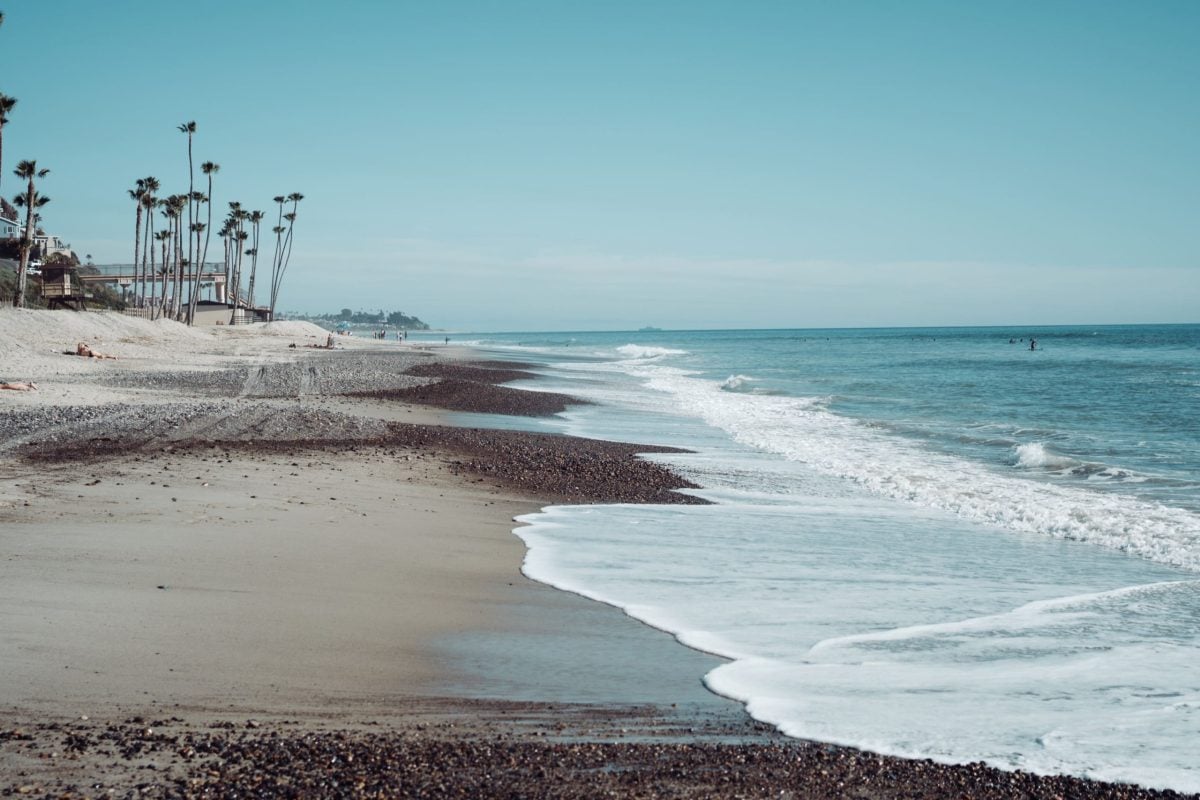
RAW Color And JPG Color Are Not The Same
Just because JPG or MOV profiles look good doesn’t mean the RAW looks good. You really see this with DJI Drones. The DNGs coming out of their drones look god awful, muddy, and gross, but the JPGs are rather nice.
Sony RAWs and even Canon RAWs are not my favorite. I think Fujifilm and Nikon do RAW the best. Is it game-changing? No.
At the end of the day, the colors are all very easy to work with, as you can see from my photos in this post. A lot of the color and tonal fidelity comes from having nice glass, so ultimately, I worry less about color science and more about having nice lenses. I won’t hold back from buying a Sony camera because of this color-science scare.
I will also add that when it comes to applying my own sort of film look, I do find it a bit easier to work with Fujifilm and Sony RAWs, which are more natural, than dealing with Canon RAW files, which tend to have the “Canon” look already applied.
AWB is another big problem cameras have that greatly impact color output, but it hasn’t been an issue with the A6400. Sony mirrorless cameras used to be pretty bad with AWB, but they’ve recently made some nice improvements to their AWB accuracy, especially in mixed lighting, and that’s really helped out the colors. I haven’t really had any situations with the A6400 where I felt it completely missed AWB.

My Problem With Sony Color Science
My problem with Sony color science isn’t with the look of the RAW colors. The neon yellows, pinks, and blues that tend to be too rich are all fixable. What’s not is color gradation.
The harsher color gradation in Sony RAW files has bugged me for years. For the most part, you won’t notice it unless you’re shooting with a lot of smooth blending colors, like with Landscape photography, and even then, it still only matters in some situations.
Sony cameras struggle to transition the colors properly from the yellow/orange sunset into the blue and purple skies, and it’s really hard to adjust these colors in post without getting banding or other issues. This has to be done correctly in the camera ADC (analog to digital converter), and it needs to look good because pushing these colors around in the post will cause issues. It’s not a game-changing problem, but you need to be a little more careful when pushing around the colors in the skies.
While you probably think I’m crazy, and I used to second guess myself on this, Sony has finally indirectly admitted this was a problem by giving it a firmware update in the Sony A9 firmware version 5.
“Software version 5.0 offers notably improved image processing that takes maximum advantage of the camera’s full-frame potential, accurately reproducing subtle changes in light for smoother, more natural tonal gradations.”
So, like with focus peaking, hopefully, this color science improvement will trickle down to their other cameras.
Is this color gradation issue a deal breaker? Absolutely not. It’s more of a minor annoyance, and again, you won’t see the issue in 95% of your photos unless you’re a landscape photographer shooting on clear days. But I do prefer the way my Canon and Fujifilm cameras do sunsets. They’re a little more pleasant, with calmer gradations that look a little more natural than what I get out of my Sony.
This is my only complaint with Sony colors. I think their skin tones look great, the greens, like with grass, look great (better than Fujifilm), the blues seem a little punchy (easy to fix), and the colors in a sunset always feel a little more digital or harsh, like the oranges and yellows are too neon or something.

The Less Than Perfect
There really isn’t much I have to complain about the A6400. Most of my issues are with how Sony does things in general, but again, every camera company has minor issues, and Sony knows of these issues and continues to improve on them.
Here are a few areas where the Sony A6400 could be improved.
4k Video Rolling Shutter – The rolling shutter is pretty bad in this camera.
Low Bit Rate 4k – Sony’s bit rate for all their cameras is still only 100mbps. Fujifilm, Panasonic, and Canon are all giving us 400mbps or more, that’s four times the bitrate, and Fujifilm even does it with H.265 instead of H.264, which even makes it better.
921,600 dot LCD Screen – The less than 1 million dot LCD screen is starting to feel a little dated.
Needs More Features – Sony used to have this play memory camera app store where you could buy various software upgrades for your cameras. Sony has killed this feature machine, and now the cameras are lacking, especially if you compare them to Fujifilm or Panasonic. There really isn’t anything cool you can do with JPG processing, and it would be cool to see Sony at least roll out some updates to their color profiles or introduce some new ones occasionally.
How I Get This Look In These Photos
I often get this question, so I will just make a little section here.
I made the photos in this A6400 review look rich and alive by shooting everything with the Sony Zeiss 35mm f2.8, which is probably Sony’s best high-micro-contrast lens. It falls short of a full-frame lens because of too many issues around the corners, edges, and color ring pattern, but it is an incredible APS-C lens.
Having a lens with great micro-contrast really helps with the pop. It’s one of the most important characteristics of a lens and is extremely important if you’re shooting incidental photography styles like this.
The Sony Zeiss 35mm f2.8 is pretty expensive since it is a full-frame lens, but there are many great all-manual APS-C lenses with good micro contrast like the Meike 35mm f1.7. You can see what I’ve reviewed so far and other options in my list of every Sony APS-C lenses. Keep in mind I review these lenses on my Fujifilm cameras, but the results with the Sony cameras will be the same.
I process these shots using the Lightroom presets I’ve developed over the last few years. I’ll make them available soon. In the meantime, I recommend looking at Mastin Labs. I used them a little last year and prefer them over VSCO. RNI isn’t bad either, and I still use it sometimes.

Fujifilm X-T30 vs Sony A6400
I would say without a doubt that this is the best APS-C mirrorless camera you can buy for the price. There is only one other option at this price: the new Fujifilm X-T30. It’s slightly lighter and has better specs and features; however, I prefer shooting with the Sony A6400 over the X-T30. The X-T30 is cool, and I love Fujifilm, but it’s very dainty, light, and cheap. Shooting with it makes me feel like some rich Beverly Hills chick, gloves up to my elbows and a small dog hanging out of my purse while I hold the camera up, arms fully extended and only using touch focus. It’s a too delicate and cute feeling, whereas the Sony A6400 feels like a tank. I love holding it, and I love shooting it, and the AF is awesome.
If I decided to go with the X-T30, I would definitely go with a thumb rest and probably a leather case just to make the camera feel great in the hand, because otherwise, the Sony A6400 has it beat.

There are still some advantages the X-T30 has over the A6400, like lens choices, video capabilities, and better manual focus assistance software. However, Sony has the advantage of autofocus tech and the flip-up screen. I also prefer the rangefinder style of the A6400 body over the body of the X-T30.
If you care mostly about specs, Fujifilm is offering a better overall APS-C package; however, if you care about user experience, the A6400 has something magical and fun that you don’t get with the X-T30. I loved my A6300 and love this A6400 even more. It’s just fun to shoot with, and the AF capabilities are reliable.
Sony A6400 Review Conclusions
The A6400 is like a little block of photographic magic. The camera is super snappy and feels good. The magnesium body is incredible and very durable, and the software tech inside the thing is amazing. If I could only have one camera, I definitely wouldn’t be sad if this was it.
If you’re already invested in the Sony system, this camera makes so much sense and is an incredible upgrade from the A6000. Just be sure to eventually upgrade your lenses from the kit lenses that a lot of people get stuck with when buying entry-level Sony cameras.
Sony A6400 Sample Images
Sample photos are all shot with the Sony Zeiss 35mm f2.8, processed with Lightroom using my personal presets.






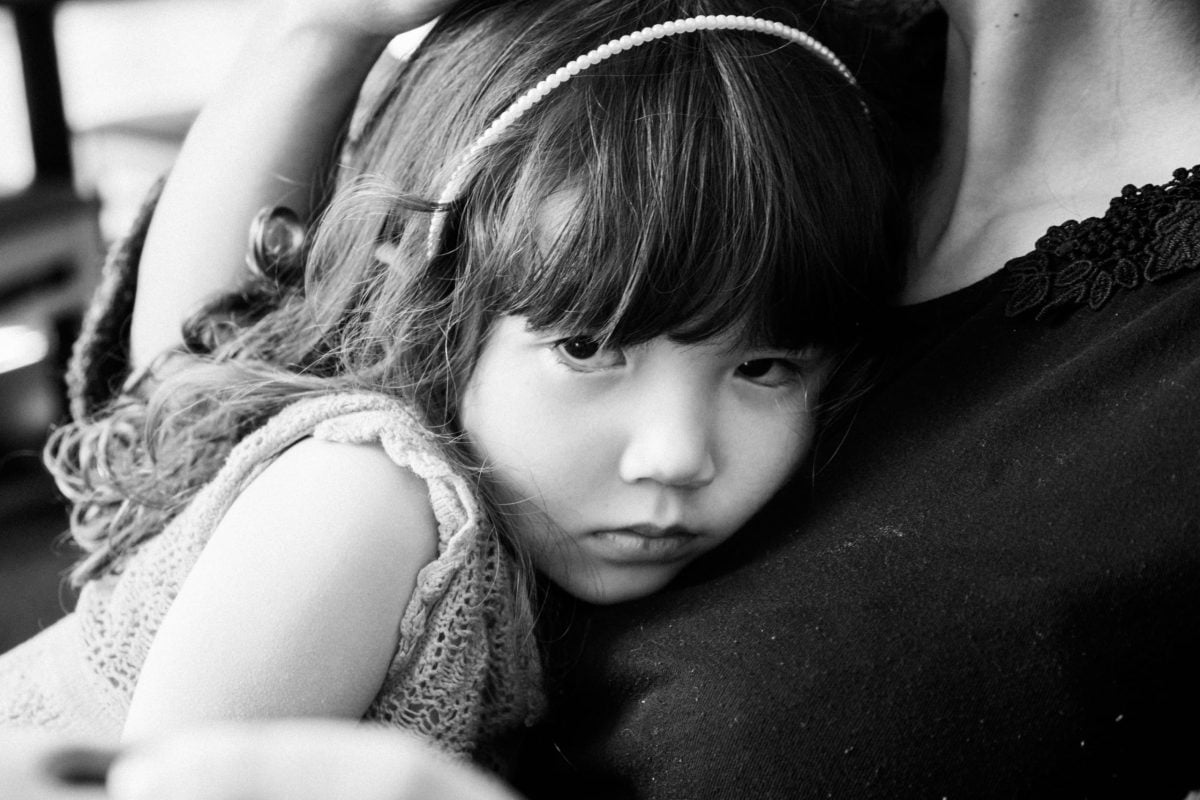

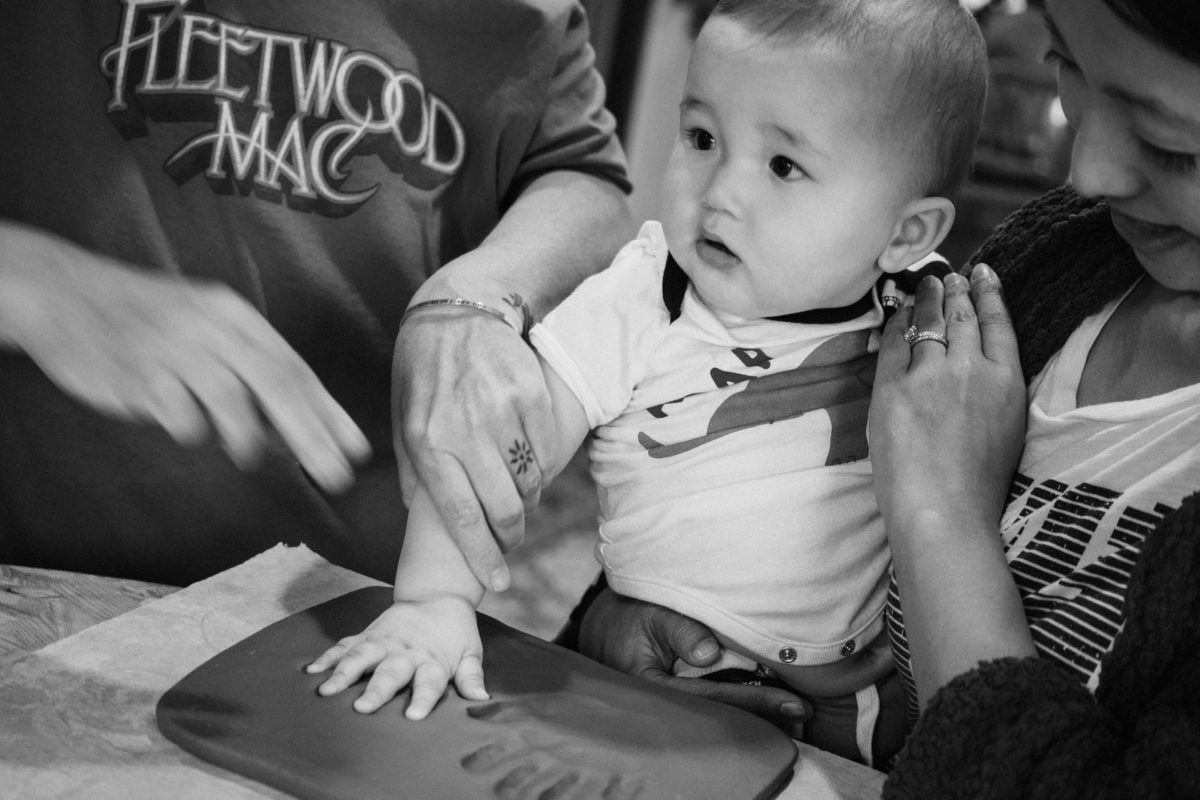
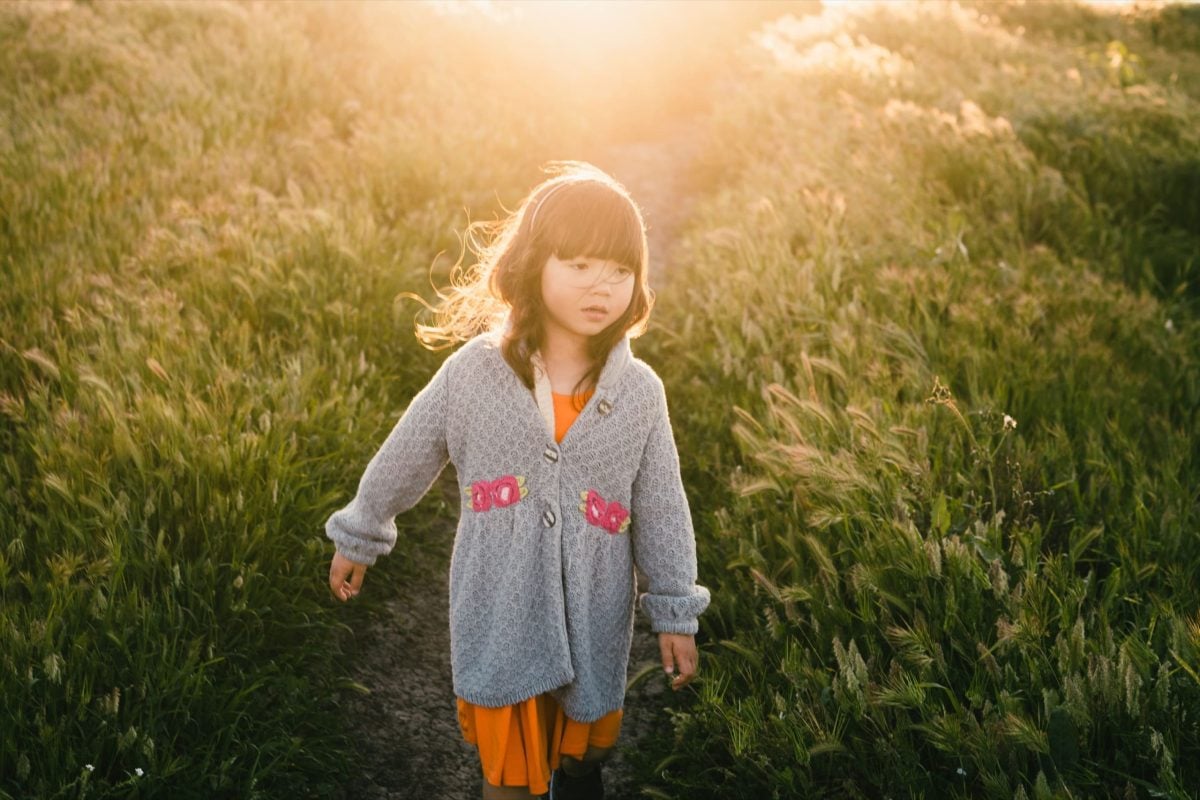
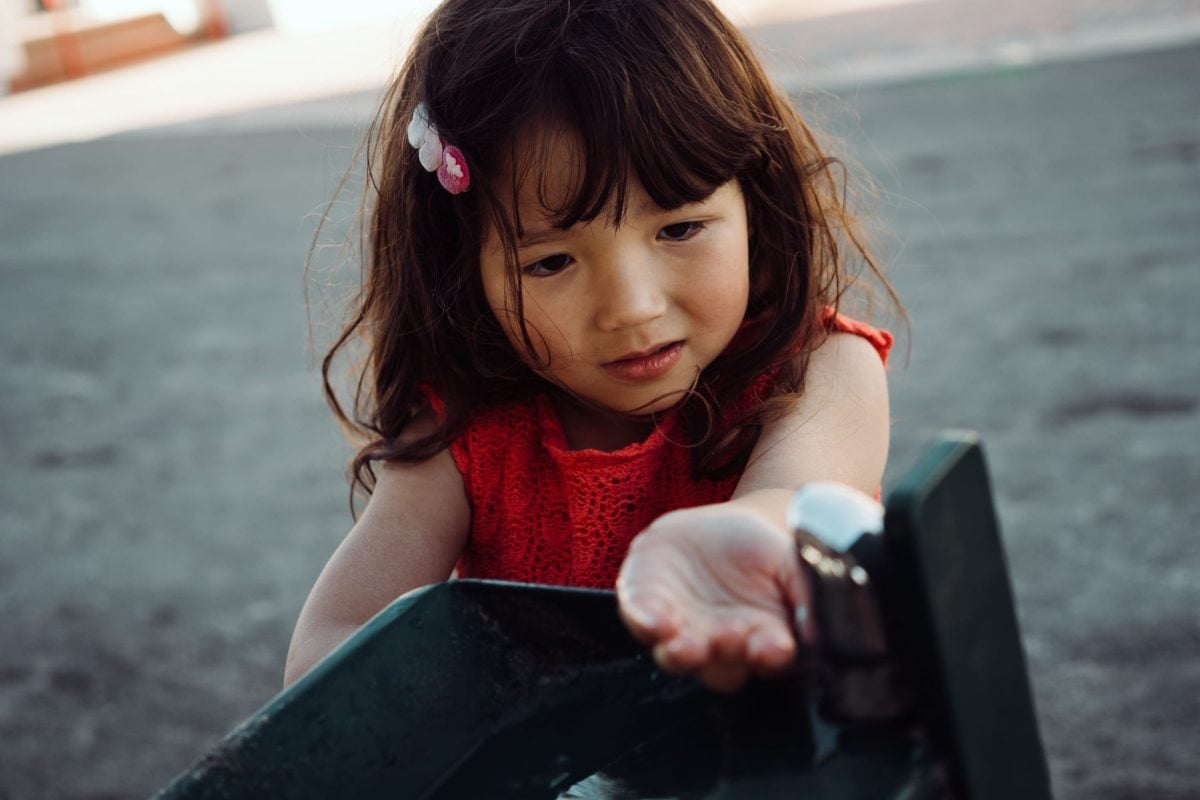

| **This website contains affiliate links. We will earn a small commission on purchases made through these links. Some of the links used in these articles will direct you to Amazon. As an Amazon Associate, I earn from qualifying purchases. |

